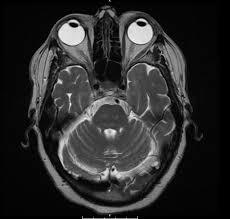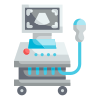Fill out form to enquire now
MRI Face And Orbit
An MRI face and orbit is a non-invasive imaging that uses radio waves and magnetic fields to create a detailed picture of the eye sockets, brain and surrounding structure. A wide range of illnesses, such as brain haemorrhage, brain tumours, aneurysms, optic neuropathy, seizures, strokes are diagnosed and treated by doctors using MRI of the face and orbit. Medintu has collaborated with NABL AND NABH Accredited diagnostic center and pathology labs offering a wide range radiology and pathology tests at affordable price. Available 24/7 customer support and uses the best equipment. To book an appointment for an MRI face and orbit go through Medintu or call us at +919100907036, +919100907622.
Why is it done?
The MRI Face & Orbit Test was taken out in order to:
- Spectroscopy and blood flow measurement.
- Cortical bone and calcification imaging.
- procedures involving the spatial determination of the location of calcifications or bone.
What is the purpose of MRI face and orbit?
An MRI of the face and orbit is used to produce accurate, detailed images of the vascular elements, bone structures and soft tissues inside and surrounding the eye and face. This imaging technique helps in evaluation, diagnosis and monitoring of numerous disorders related to the orbits and face. The following are some objectives when performing an MRI in this area:
1.Orbital Pathology Detection
Masses and Tumours: MRI is useful in identifying both malignant and benign tumours, such as tumours, tumours of the optic nerve brain tumours, lymphoma,, that are located inside or close to the orbit.
Inflammation: Magnetic resonance imaging (MRI) can be used to evaluate chronic inflammatory conditions such as orbital cellulitis, thyroid eye disease , and orbital pseudotumors in order to determine the degree of inflammation and its impact on surrounding tissues.
- Evaluation of Breaks or Trauma
Orbital fractures: Magnetic resonance imaging (MRI) can detect fractures involving the orbit’s bony walls, particularly if they are linked to damage to soft tissues like the muscles or nerves that regulate eye movement.
Evaluation following trauma: MRI is useful in determining whether muscles, nerves, or other soft tissues have been damaged following facial or orbital trauma. It also helps identify potential problems such as haemorrhage or herniation of the orbital contents.
- Assessment of Conditions Related to Eyes
Pathologies affecting the optic nerves: MRI may evaluate diseases such as optic neuritis, optic nerve damage, and cancers that impact the optic nerves.
Changes related to glaucoma: In some situations, MRI can assist with evaluating the optic nerve head and other orbital structures in individuals who have glaucoma or may have optic nerve injury.
- Examining Chronic Sinusitis
Because the orbit is close to the sinuses, diseases like sinusitis or sinus tumors might have an impact on it. An MRI scan can be used to assess the connection between ocular disease and neighbouring sinus tissues.
- Evaluation of Abnormalities in Vascular Function
Vascular malformations: Aneurysms in and around the orbit, arteriovenous fistulas, and orbital venous malformations are a few examples of vascular disorders that can be seen by MRI.
Pathologies within the brain that impact the orbit: An MRI can assist in determining whether a tumor or vascular abnormality has spread from the brain into the orbit.
- Assessing Neurological Conditions
Disorders affecting the optic pathway: Magnetic resonance imaging (MRI) can be used to evaluate injuries along the optic nerve, optic chiasm, and optic tracts. These structures can be impacted by tumors, inflammatory illnesses, and multiple sclerosis.
Brain and Orbit Combination MRI
Any of the following conditions listed in the medical record might require a combined MRI of the brain and orbit(s):
- Severe optic neuritis with symmetrical optic disk expanding (papilledema) and visual loss may indicate a neurological spectrum condition, which has been suggested or confirmed.
- eye disease with unique presentation, substantial visual impairment, or delayed (more than 12 weeks) recovery from symptoms or beginning of treatment.
Regarding diagnosis and therapy planning, optokinetic neuropathy or unilateral optic disk swelling of unidentified cause.
- Test Type: MRI Face And Orbit
- Preparation:
- Wear a loose-fitting cloth
- Fasting not required
- Carry Your ID Proof
- Prescription is mandatory for patients with a doctor’s sign, stamp, with DMC/HMC number; as per PC-PNDT Act
- Reports Time: With in 4-6 hours
- Test Price: Rs.8000
How to book an appointment for MRI face and orbit?
To book an appointment for an MRI face and orbit go through Medintu or call us at +919100907036, +919100907622.
What does an MRI Orbit show?
It shows highly detailed images of the eye, optic nerves, extraocular muscles and soft tissues.
How long does an Orbit MRI take?
The orbit MRI takes approximately 45 minutes.
Can MRI of the brain show eye problems?
Brain MRI scan is used to investigate symptoms such as vision problems, headaches.
What is an Orbit scan ?
It is a non-invasive imaging that uses radio waves and magnetic fields to create a detailed picture of the eye sockets, brain and surrounding structure
How long does an MRI face take?
It takes 30 to 60 minutes to complete the scan.
Why Choose Medintu for MRI Face And Orbit ?
Medintu has collaborated with NABL AND NABH Accredited diagnostic center and pathology labs offering a wide range radiology and pathology tests at affordable price. Available 24/7 customer support and uses the best equipment. Our team is highly qualified and trained. We offer best services such as diagnostics, ambulance, and home based care. Medintu offers services such as MRI scan, CT scan and ECG and provides reasonable prices for MRI scans. To book an appointment for an MRI face and orbit go through Medintu or call us at +919100907036, +919100907622.





